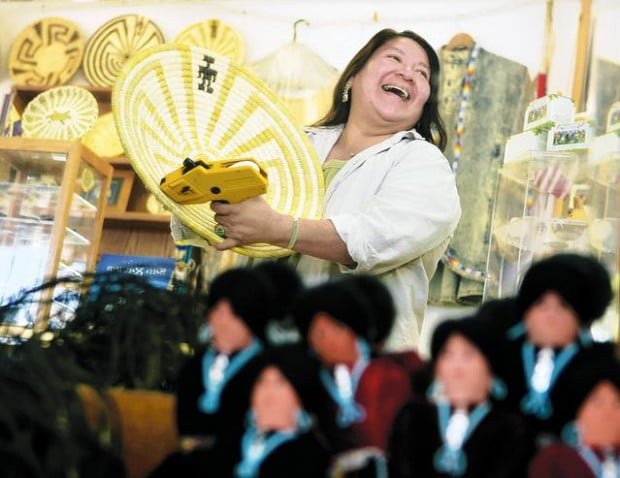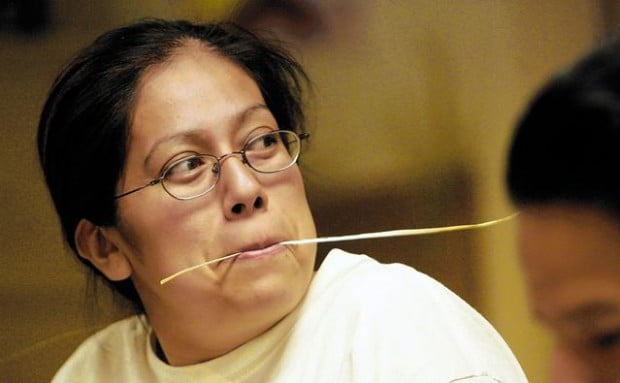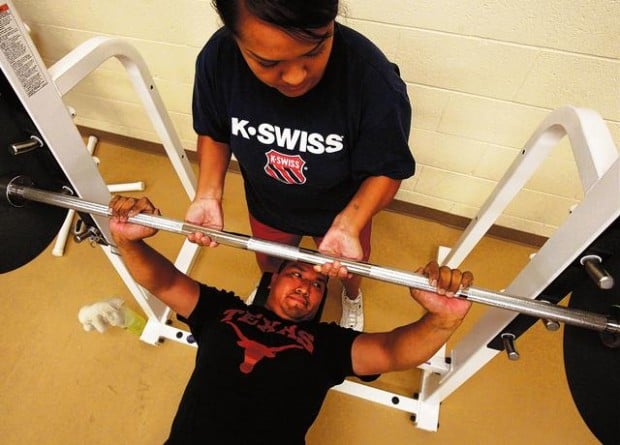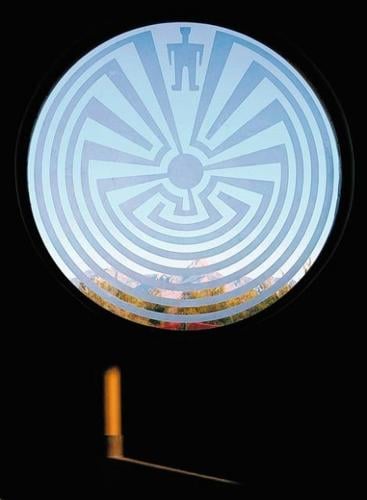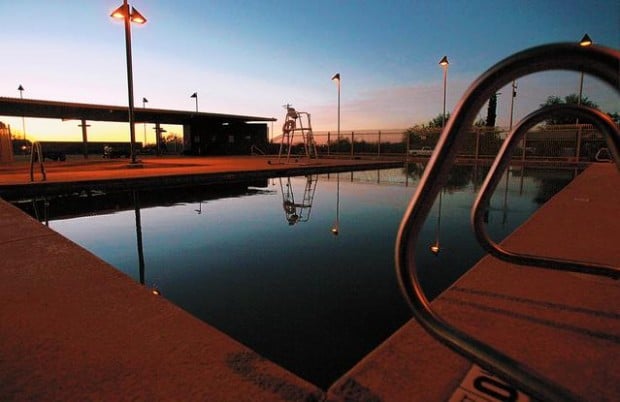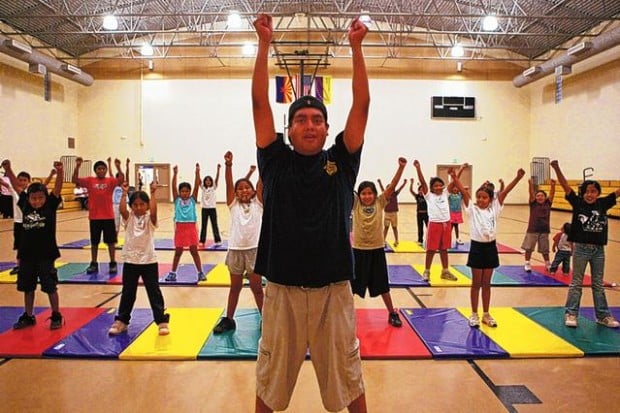Tohono O'odham
Delphine Saraficio's eyes twinkle when she talks about weaving baskets.
Her great-aunt, the late Molly Lucas, taught her the art of basketry when she was a girl. She remembers taking trips to Oracle to gather the grasses used to make the traditional baskets.
Bear grass is harvested in winter months and the yucca plant in summer months. The white-seeded devil's claw, which is a black seed pod, is harvested in August.
At age 52, Saraficio continues passing on the knowledge to her four children and families enrolled in basket-weaving classes at the San Xavier District Education Center. She also teaches the O'odham language to students before the weaving classes begin.
Saraficio is among the more than 28,000 people who are members of the Tohono O'odham Nation, including members in northern Sonora, Mexico. Its reservation spans 2.85 million acres and is about the size of Connecticut. It is the second-largest reservation in the United States.
In the 1980s, the art revived after being taught in the schools, said Saraficio, a third-generation weaver who will have baskets for sale this Christmas season at Reservation Creations Indian Gift Shop in San Xavier Plaza, 1959 W. San Xavier Road. The plaza is directly south of Mission San Xavier del Bac.
"Every basket is unique. You cannot compare it to others," Saraficio tells her students who use tools including an awl, a knife, nail clippers, a rock and a hammer, and a bowl with water to soak the grasses.
Student Gina Ortegas, 9, is proud of her creation — a turtle that earned her a third place ribbon at a conference at the Heard Museum in Phoenix last year.
"Making baskets is fun and I am learning more about my culture," said Gina, who takes the classes with her grandmother Florence Hernandez, 53.
Jovanna Peña, 28, a fourth-grade teacher at San Xavier Mission School, enrolled in the classes three years ago and is accompanied by several relatives. She has baskets for sale at a gift shop at the mission.
"My ancestors did this and my parents taught me to always remember where I come from," Peña said. "I wanted to learn this art because I don't want it to die. I enjoy it. It relaxes me and if I'm meant to become a master basket-weaver, it will come to me."
Reservation Creations Indian Gift Shop
Carole J. García is ready for tourists and Christmas shoppers this holiday season, one of her favorite times of the year.
On a good day, 2,000 tourists visit Mission San Xavier del Bac and about 200 will make their way to García's shop. Winter visitors begin coming to Arizona in November and remain through May.
García, 57, opened her shop in 1990 at San Xavier Plaza. It operates daily from 9:30 a.m. to 5:30 p.m.
"I like this time of year because everyone is in good spirits. People are friendlier to each other," said García, who grew up at the St. James Ranch surrounded by cattle, horses and farm lands just south of Sells.
García travels to artists' homes to buy pieces, or artists bring their works to the shop. There are times they meet at trade shows.
"It is great to see how their children have grown up and many of them are now creating pottery or jewelry — a craft they learned from their parents or grandparents," she said.
Shoppers can find Native American pieces including Navajo rugs, rings, bracelets, earrings and necklaces. There are pieces made from gold and silver with coral, opal, turquoise, amethyst and mother of pearl. There are Tohono O'odham baskets and San Carlos Apache burden baskets.
The sunshine in December attracts shoppers and tourists who also come to eat freshly cooked fry bread, tortillas, stew and chile con carne that is prepared under large ramadas near the mission or at the Wa:k Snack Shop. In O'odham, wa:k means "where the water goes in," or underground spring.
García, who majored in education at Arizona State University and received a master's in public health from the University of California at Berkeley, has traveled the world.
She said it "feels right" being at home on the Tohono O'odham Nation. "I love the atmosphere and I like sharing this beautiful place with people from all over the world."
San Xavier del Bac
It is known as the "White Dove of the Desert" and has stood for more than 200 years on the Tohono O'odham Nation. Tohono O'odham means "desert dweller."
The mission is an active church within the Roman Catholic Diocese of Tucson.
It was founded by Jesuit missionary Eusebio Francisco Kino, who laid the foundation in 1700. Kino first visited the area in 1692 and he died in 1711.
The architecture is a blend of late Mexican Renaissance, Moorish and Byzantine styles. The church's laborers were O'odham and the mission was built under Franciscan priests.
Cultural Center, Museum
O'odham children, elders and tribal officials will be among those welcoming visitors in O'odham, Spanish and English at the entrance of the nation's $15.2 million cultural center and museum. It is set to open in May.
The greetings will air on a rotating video display at the state-of-the-art structure built in lush desert south of Sells in the community of Topawa. The sacred Baboquivari Peak — where the O'odham creator, I'itoi, is said to live in a cave — can be seen from the museum grounds.
O'odham make pilgrimages to the cave where they pray to their creator on the 7,730-foot mountain.
Within this backdrop, the nation is preparing to bring home artifacts including pots, jewelry, tools and beadwork that belonged to its Hohokam ancestors a millennium ago.
These artifacts are housed mostly in nontribal museums, including the Arizona State Museum, which has about 3,500 Hohokam objects that were collected over decades by the late Norton Allen.
Allen collected artifacts from land that was cleared for cotton fields, and his wish was that the O'odham have the first opportunity to select material for exhibit for their museum from his collection.
In 1994, an intergovernmental agreement was finalized that has the Arizona State Museum providing technical training for O'odham to care for the artifacts, which Allen turned over to the museum.
For Allison Francisco, 32, the museum's artistic services liaison, the museum is a dream come true. She comes from generations of artists. Her grandfather, the late Asencio Antone Palma, was a woodcarver and the traditional governor of the O'odham in Mexico.
"When my mother told him in O'odham about the museum, he was so excited. It's like saying a prayer and your prayer gets answered. How do you explain that feeling? It's amazing," said Francisco, who plans to return to the Institute of American Indian Arts in Santa Fe to earn a degree in museum studies.
At the cultural center there is a circular courtyard that faces a performance stage. There also is an outdoor cooking area that can be used for celebrations, including weddings, birthdays and reunions. Some 30 acres are designated for nature trails.
There is an elders room for seniors to gather. It has a large fireplace with a mesquite-wood mantel, a pine ceiling and a large circular window with an etching of a man in the maze, a symbol that represents a person's journey through life up to death.
Gaming profits
Gaming dollars provide jobs for O'odham and other residents of Southern Arizona. They have built health clinics, the cultural center and museum and Tohono O'odham Community College and provided more than $36 million in college scholarships. Now, the nation is celebrating the $19 million construction of five recreational centers, which include lighted playing fields, weight rooms, computer labs and gymnasiums.
"We value our people and as a tribe we will grow as a whole," said April Ignacio, 25, Sells center facility coordinator who operates programs with a staff of nine. "We have been able to bring the community together. It is breathtaking. There are no limits to what we can do and accomplish."
Desert Diamond Casinos
While thousands play bingo, blackjack, poker and slots, or attend sporting events, concerts and banquets, Executive Chef J. Ramon Delgado has his pulse on Desert Diamond Casinos' culinary operations. Delgado, 37, and his team of chefs work to please guests at Agave Restaurant, a fine-dining establishment that attracts world travelers.
In addition to Agave, cooks prepare about 20,000 meals each week for customers who eat at the casino buffet, Diamond Grill, Diamond Taqueria and snack bars. Those meals do not include the ones prepared for more than 700 employees daily.
Delgado, who is a native of Hermosillo, Sonora, is now planning for the opening in September of a hotel with up to five restaurants at Desert Diamond at Nogales Highway.
"My job is very challenging and passing on my cooking and techniques is very important to me," said Delgado who creates the menus and brainstorms with his staff. "I love to see people enjoying their meals. I have a passion for my job," he said.


